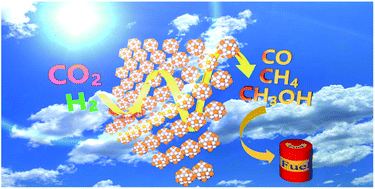State-of-the-art advancements in photo-assisted CO2 hydrogenation: recent progress in catalyst development and reaction mechanisms
Abstract
The excessive anthropogenic CO2 emission caused by the combustion of fossil resources has caused serious global ecological and energy problems in recent decades. As one of the most effective solutions to tackle these issues, catalyzing CO2 hydrogenation to produce useful chemical stocks or fuels has tremendously received global interest and has already gained practical applications in industry. However, high pressure and temperature are normally required for these processes, which dramatically lift up the cost and safety concerns. Thus, exploring new strategies for CO2 hydrogenation under mild conditions is of significant importance. Recent research indicated that photo-promoted catalytic CO2 hydrogenation is a feasible strategy to resolve this issue. In this review article, we firstly outline the background and the principles of photo-assisted CO2 hydrogenation, followed by documenting the state-of-the-art research development including the catalyst exploration and mechanistic investigations. Last but not least, we present the critical challenges at the current stage and propose future prospects for photo-promoted CO2 hydrogenation technologies.



 Please wait while we load your content...
Please wait while we load your content...